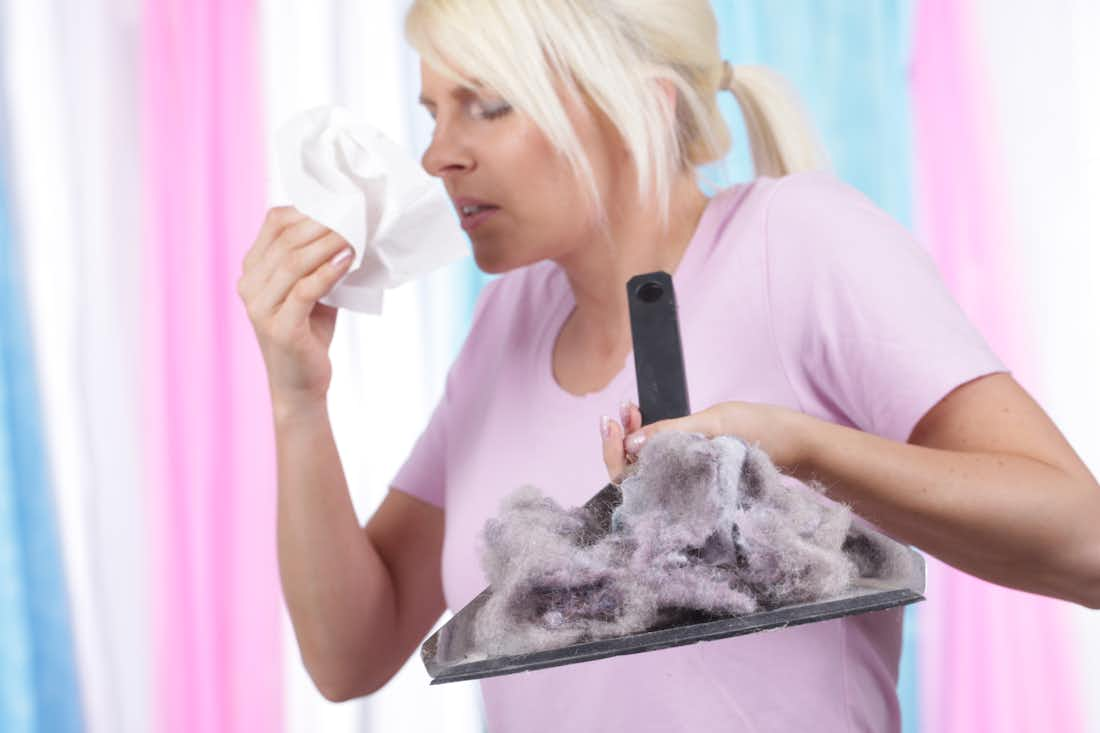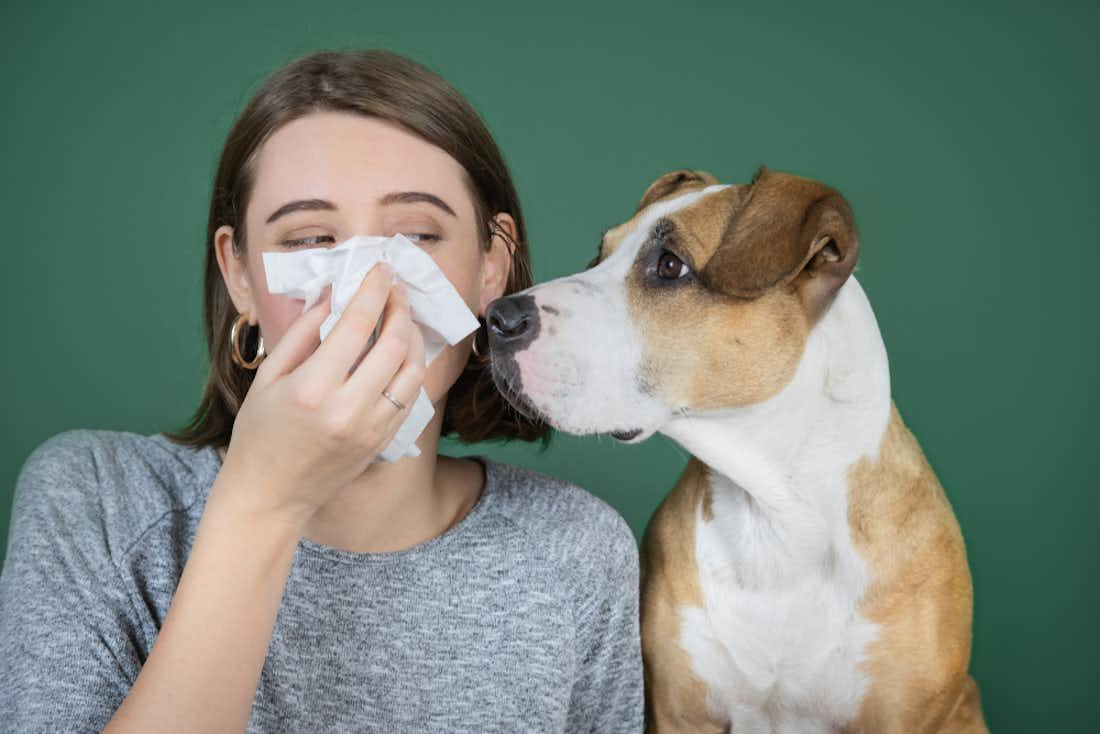Apr 26, 2022
Allergies or Pink Eye: How To Tell the Difference
5 minute read
Every single symptom of allergies can be pretty frustrating.
From the stuffy and runny nose to the incessant coughing, allergies can really put a damper on your mood. But if there’s one symptom that might be the most infuriating, it’s those nagging itchy and watery eyes.
Your eyes are a sensitive part of the body, and when allergy inflammation causes them to itch and swell, it can make you want to lay in bed with a compress on your eyes forever.
The eye-related symptoms of allergies can look extremely similar to pink eye, which is a completely different ailment that needs a completely different treatment method.
So, how do you tell them apart? Let’s take a look at the similarities and differences between allergies and pink eye so you can see clearly.
What Is Pink Eye?
Also known as infectious conjunctivitis, pink eye is an infection of the transparent membrane that lines your eyelid and covers the white part of the eyeball. The membrane is called the conjunctiva, and when the small blood vessels within this membrane become inflamed, they become more visible — giving the eye a reddish or pink appearance.
Pink eye is a contagious bacterial infection that can result in serious eye conditions if left untreated.
The symptoms of pink eye most commonly include:
- Redness in one or both eyes
- A gritty feeling in one or both eyes
- Discharge that forms a crust overnight, possibly preventing the eyes from opening in the morning
- Itchiness and discomfort in one or both eyes
- Tearing
How Can I Tell the Difference Between Allergies and Pink Eye?
If you wake up one morning with a red and itchy eye, don’t panic! It might not be pink eye — it might just be some annoying allergies.
Here are some of the easiest ways to tell the difference between the two.
Causes
One of the most important factors to consider is the possible cause of the redness in your eye. A number of different factors can cause conjunctivitis.
In most cases, conjunctivitis is caused by viruses or bacteria due to direct contact with dirt or grime. They may occur if you sleep on dirty pillows, touch your eyes before washing your hands, or even use contact lenses without properly cleaning them beforehand. Conjunctivitis can also be caused by irritation from a foreign substance or chemical splash.
Allergic conjunctivitis, which is the name for reddened, allergy eyes due to contact with an allergen, occurs when your body comes into contact with an allergy-causing substance such as pollen, dust mites, mold, or pet dander.
Allergic conjunctivitis is a faulty immune response in which your body perceives the substance as a threat, releasing a flood of chemicals to prevent the substance from spreading throughout the body.
One of these reactions involves the production of immunoglobulin E, or IgE, antibodies. These can trigger special cells in your eyes to release inflammatory substances which cause the blood vessels in your eyes to swell. This swelling results in a reddened appearance and an itchy sensation.
Often, allergic conjunctivitis occurs alongside other allergy symptoms such as sneezing, wheezing, nasal congestion, or cough, whereas pink eye symptoms occur on their own.
Take note of the timing of your symptoms as well. If your red and itchy eyes started up due to a change in season, there’s a likely chance that they might be related to spring allergies or an outdoor allergy trigger.
Severity of Symptoms
In general, the eye-related symptoms of allergies are not as severe as those related to bacterial or viral pink eye.
Allergy eyes typically only present themselves as mild to moderate itching and redness, with perhaps a little bit of tearing.
On the other hand, bacterial conjunctivitis usually presents as moderate to severe reddening of the eye followed by discharge, which is not a symptom of allergic conjunctivitis. Discharge or excessive crust around the eyelid is commonly an indicator of pink eye.
Additionally, allergy eyes tend to go away within a shorter time than conjunctivitis. In fact, if you remove yourself from being exposed to allergy triggers, your symptoms will usually subside.
Contagiousness
You cannot transfer red and itchy eyes caused by allergies from person to person. So, if you know someone who is experiencing the symptoms of pink eye, and you are now also seeing the same symptoms, it might be likely that you have conjunctivitis.
If you’re noticing discharge around your eyes and you recently spent time in a public setting, this is another indication that it might be pink eye.
The bacteria and viruses that cause pink eye are very contagious, and all it takes is a few moments of direct contact to become infected. If you think you have pink eye, it is important to wash your hands often and try not to touch other people while you have the infection.
How Is Treatment Different for Allergies and Pink Eye?
Since both of these ailments are caused by different factors, there are naturally different treatment methods for each one.
Here’s what you need to know.
Pink Eye Treatment
Treating pink eye is usually focused on relieving the symptoms, as you usually just need to wait for it to run its course and get better on its own.
With that said, a doctor may prescribe antibiotic eye drops if they believe a bacterial infection caused your pink eye. For viral infections, you’ll just need to wait for symptoms to gradually clear.
Your doctor may recommend that you apply a cold compress to your eye several times a day to reduce swelling and itching. It’s important to do this instead of rubbing your eye, as this can cause damage to the lining of your eye if done in excess.
Additionally, if you wear contact lenses, your doctor will likely advise you to throw them away and replace them.
Allergy Eye Treatment
To treat the symptoms of itchy and watery eyes due to allergies, the first step is usually aimed at treating the underlying allergy symptoms.
Antihistamine medications block the effects of a chemical called histamine, which is released by the immune system and is responsible for most allergy symptoms.
Eye drop antihistamines can be placed directly in the eye to reduce swelling and bring you some comfort. But sometimes, a combination of oral antihistamines, nasal sprays, and eye drops can work in unison to provide the most effective relief.
Check out our long-term relief pack for everything you need in one fell swoop.
But antihistamines will only treat the symptoms of allergies — not the underlying causes. Allergy immunotherapy, or AIT, is a way to reduce your body’s response to allergens in general.
It works by gradually exposing your immune system over time to a small amount of a suspected allergen until you gain a tolerance.
To find out if this revolutionary allergy treatment is right for you, take your free allergy consultation with Cleared and meet with a certified allergist to see if you fit the bill.
How Can I Prevent Allergies and Pink Eye?
One of the best ways to treat both allergies and pink eye is by preventing them in the first place. Here are some tips and tricks for preventing these sources of eye irritation.
Preventing Pink Eye
Preventing pink eye mainly involves practicing good hygiene. A few easy tips and tricks include:
- Avoid touching your eyes with your hands
- Keep your sheets and pillowcases clean
- Wash your hands often
- Use a clean towel and washcloth daily
- Don’t share cosmetics or eye products with others
- Stay away from others who you know have pink eye
Preventing Allergies
The best way to prevent allergies from causing you issues is by understanding what’s triggering them in the first place.
You can take an allergy test from Cleared to see what exactly you’re allergic to, which will make it easier for you to stay away and keep your eyes feeling fresh.
In Conclusion
Allergy eyes and pink eye look and feel extremely similar. However, red eyes from allergies are caused by a faulty immune response, whereas a bacterial or viral infection causes conjunctivitis in the eye's outer membrane.
Additionally, while the symptoms of both can present themselves as itchiness, redness, and general discomfort, pink eye typically also comes along with yellow crusty discharge upon waking. This is generally not present in allergy eyes.
Home remedies to relieve the symptoms are generally the same for both cases, including placing a warm or cold compress over the eye. However, you may be prescribed antibiotics for conjunctivitis, or antihistamines to alleviate your allergy symptoms.
Either way, remove the guesswork by consulting with a licensed allergist from the comfort of your own home. Take your free allergy quiz to get started on the path towards personalized treatment and relief.
Sources:
Immunoglobulin E (IgE) Defined | AAAAI
Allergies and Allergic Reactions | AAFA
Pink eye (conjunctivitis) - Diagnosis and treatment | The Mayo Clinic



